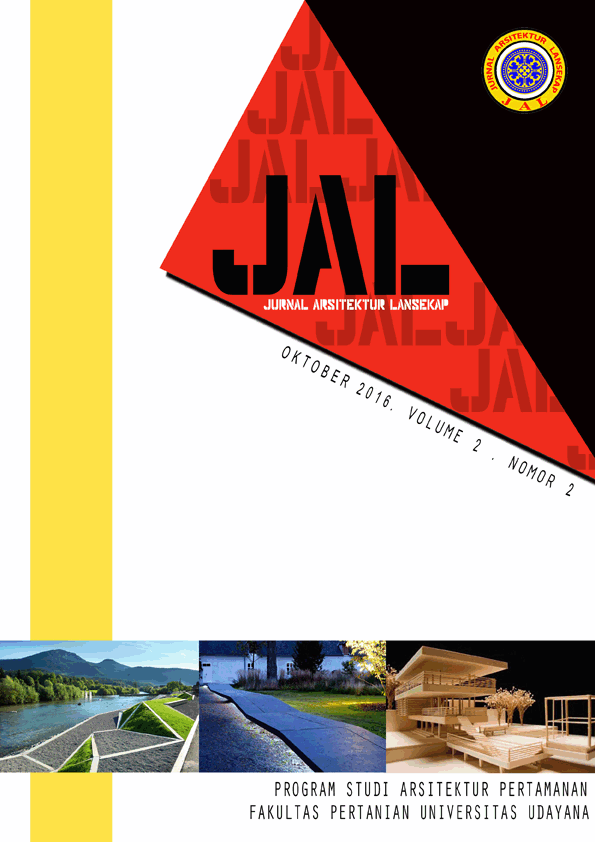Manfaat Kanopi Pohon dalam Mereduksi Aliran Permukaan Studi Kasus: Sempadan Sungai Ciliwung Tengah, Kota Bogor
Abstract
ABSTRACT
The Benefit of Trees Canopy in Reducing RunoffCase Study: Border of Center Ciliwung River, Bogor Municipality
Bogor as one of Center Ciliwung Sub Region River flow has decreased the percentage of green open space from year to year (Bappeda 2007). Study area boundary is the border as far as 300 meters to the left and right side of Ciliwung River. The method of this research is to estimating the benefits of tree canopy using Quickbird satellite image of the city of Bogor in 2006 with the software ArcView GIS 3.2 extensions CITYgreen 5.4. The study includes comparisons between the percentage of built up area and green open space. Comparison of built up area and the largest area of green open space can be found in Tanah Sareal District, the ratio reached 2:1. While the smallest ratio can be found in the MiddleDistrict of Bogor (1:1). This means the ideal condition of river’s border are found in the Middle District of Bogor that can decreasing runoff well. The estimation of trees canopy benefits can be seen from the amount of runoff volume, it can be predicted that trees canopy in study area can reduce average ± 7,55% of runoff volume. This means that the conditions in the study area was still below the average standard riverine.
Downloads
An author who publishes in the Jurnal Arsitektur Lansekap (JAL) agrees to the following terms:
- Author retains the copyright and grants the journal the right of first publication of the work simultaneously licensed under the Creative Commons Attribution-ShareAlike 4.0 License that allows others to share the work with an acknowledgement of the work's authorship and initial publication in this journal
- Author is able to enter into separate, additional contractual arrangements for the non-exclusive distribution of the journal's published version of the work (e.g., post it to an institutional repository or publish it in a book) with the acknowledgement of its initial publication in this journal.
- Author is permitted and encouraged to post his/her work online (e.g., in institutional repositories or on their website) prior to and during the submission process, as it can lead to productive exchanges, as well as earlier and greater citation of the published work (See The Effect of Open Access).
Read more about the Creative Commons Attribution-ShareAlike 4.0 Licence here: https://creativecommons.org/licenses/by-sa/4.0/.







